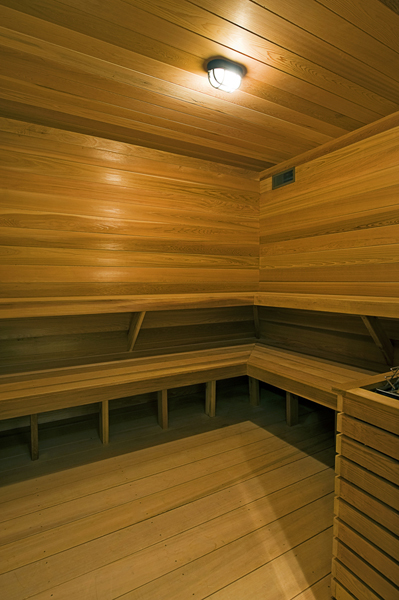
In the eyes of the American public, 15 years ago saunas were just wooden boxes heated inside. But not anymore.
Fitted with glass doors, low-voltage lighting and even entertainment centers, modern-day saunas blow their predecessors out of the water.
“They’ve really come a long ways, in terms of the design,” Ian Fyffe, owner of Sag Harbor-based Sparkling Pools, said during a recent telephone interview. “They’ve got higher technology controls, they’ve got iPod docks. Personally, I’m okay with music. You can do whatever you want, but I think having a TV in there is counteractive to the principle of a sauna.”
Whether an ancient or modern-day sauna, the goal of a higher level of wellness has remained the same—though perhaps sauna usage was more practical than luxurious at the outset.
It is generally believed that the Finns built the first saunas, between the 5th and 8th centuries, into the sides of hills or embankments as winter dwellings, heating them with a fireplace. As tools advanced, saunas were later built above ground using wooden logs, which is the design used all around the world today, and utilized as havens for stress reduction, detoxification and spiritual connection.
Saunas are typically built with wood, such as cedar, that is resistant to rot and able to withstand high temperatures, according to Rich Perello, owner of Perello Building Corporation in Southampton. Ceiling height shouldn’t exceed 7 feet, he said. Any higher and the heat, which rises and collects at the top, will be out of reach from where people are seated. In saunas built with a high bench and a low bench, there is usually a 10- to 15-degree temperature difference between the two, he said.
To keep the sauna toasty, its insulation is topped with an aluminum foil vapor barrier, which reflects the heat and keeps it from escaping. Also equipped with an electrical heating element, a traditional sauna usually sits between 150 and 200 degrees, the experts said. If the dry heat becomes too intense, water is poured over the vulcanite rocks (made especially for saunas) that sit on top of the heater, which gives off a burst of steam into the atmosphere, Mr. Fyffe said.
In 1965, infrared saunas energized the industry. The difference between the saunas lies in the heater. Instead of warming the air, an infrared heater essentially turns the sauna into a microwave, heating the body from the inside out, Mr. Fyffe said. The temperature doesn’t need to be as hot and usually sits between 120 and 130 degrees, he said.
“Ultimately, the benefits are the same,” he said. “How you get there is different.”
The health perks are numerous, John’s Pools & Spas owner Linda Schoeck said during a recent telephone interview. Increasing body temperature kills off fungus, bacteria and viruses, she said. Saunas improve blood circulation and boost the body’s immune system. The body produces more white blood cells in an artificial fever state, she said.
“I just feel great when I get out of them. I think they benefit me from head to toe,” she said. “They’re very relaxing to me, whether it’s an infrared sauna or traditional sauna that uses steam. Whenever you go in a sauna, you sweat. It cleanses your skin and it’s a good place to bond. It’s just a good place to chat and hang out and you feel like you sweat out some of the toxins in your body. Sometimes you feel like you lose a pound or two.”
Dry heat isn’t for everyone, though, the experts said. For those who prefer wet heat, a steam room, which is essentially a large tiled shower that utilizes a water-filled generator system that pumps steam into the enclosed space, may be the way to go.
“People who are athletic or work out a lot like the steam shower, from what I’ve seen,” Mr. Perello said. “You work out and then you take a steam shower. I think a lot of these houses out here are resorts for these people, so it’s like a spa to them.”
Decently sized saunas run about $10,000, Mr. Perello said, and a steam room—because there is more plumbing involved with the steam generator system—can cost between $15,000 and $20,000.
More affordable options are sauna kits, Ms. Schoeck said, which cost between $3,000 and $11,000, depending on size.
Both Ms. Schoeck and Mr. Fyffe warned against purchasing a sauna kit without a recommendation from a trusted retailer first.
“Pretty much if it sounds too good to be true, it probably is,” Mr. Fyffe said. “It’s not something I would advise buying on the internet.”
Though the East End is often considered the epitome of comfortable living, saunas and steam rooms aren’t in high demand in the Hamptons, Mr. Fyffe said.
“A lot of times, it’s just an accessory,” he said. “Like a handbag in real high-end houses.”